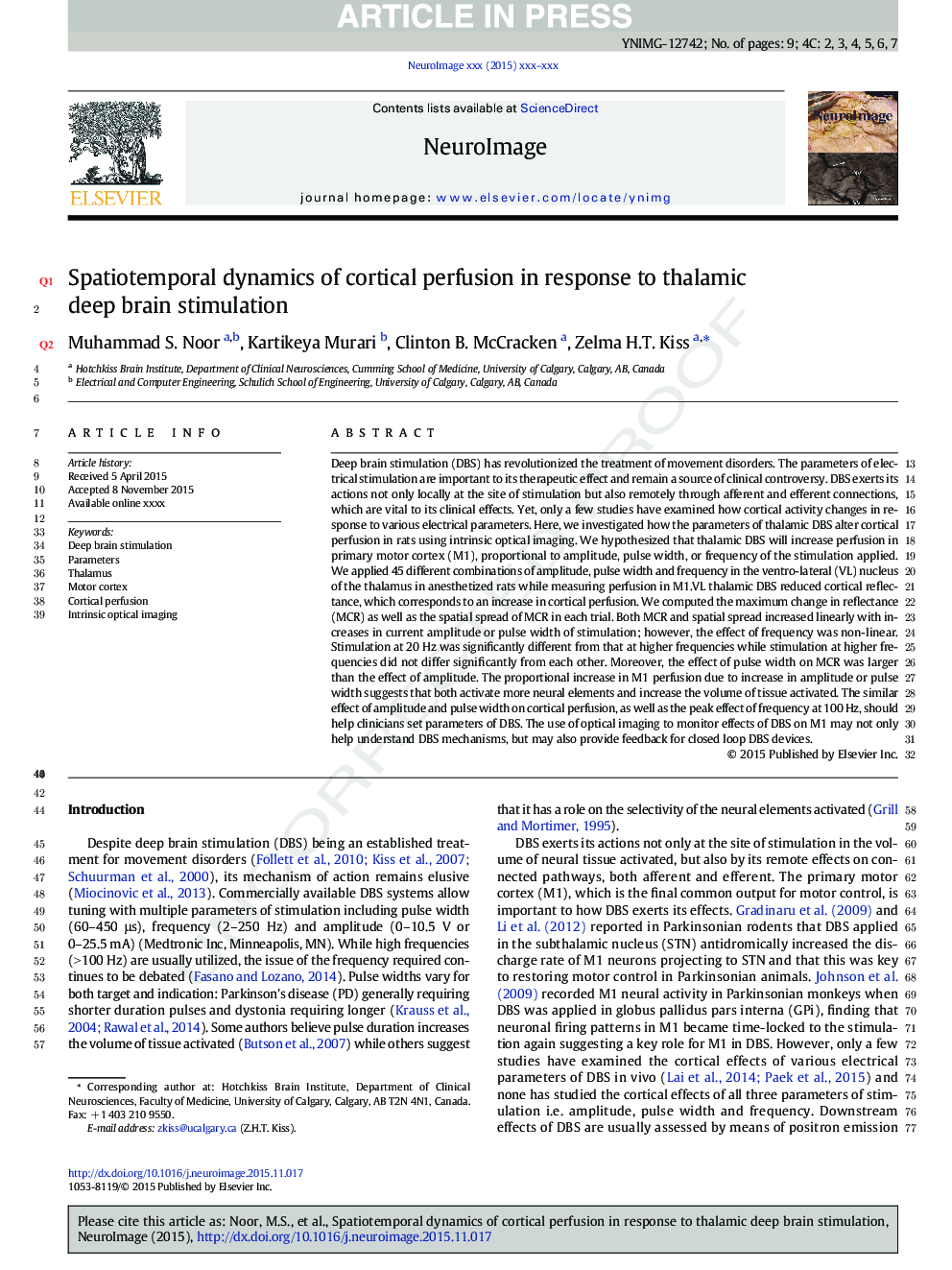| کد مقاله | کد نشریه | سال انتشار | مقاله انگلیسی | نسخه تمام متن |
|---|---|---|---|---|
| 6023899 | 1580882 | 2016 | 9 صفحه PDF | دانلود رایگان |
عنوان انگلیسی مقاله ISI
Spatiotemporal dynamics of cortical perfusion in response to thalamic deep brain stimulation
ترجمه فارسی عنوان
دینامیک اسپکترومومی از پرفوریوم قوسی در پاسخ به تحریک مغزی عمیق تالام
دانلود مقاله + سفارش ترجمه
دانلود مقاله ISI انگلیسی
رایگان برای ایرانیان
کلمات کلیدی
تحریک مغزی عمیق، پارامتر تحرک تالاموس، قشر مکرر، پرفیوژن قشر، تصویربرداری نوری ذاتی،
موضوعات مرتبط
علوم زیستی و بیوفناوری
علم عصب شناسی
علوم اعصاب شناختی
چکیده انگلیسی
Deep brain stimulation (DBS) has revolutionized the treatment of movement disorders. The parameters of electrical stimulation are important to its therapeutic effect and remain a source of clinical controversy. DBS exerts its actions not only locally at the site of stimulation but also remotely through afferent and efferent connections, which are vital to its clinical effects. Yet, only a few studies have examined how cortical activity changes in response to various electrical parameters. Here, we investigated how the parameters of thalamic DBS alter cortical perfusion in rats using intrinsic optical imaging. We hypothesized that thalamic DBS will increase perfusion in primary motor cortex (M1), proportional to amplitude, pulse width, or frequency of the stimulation applied. We applied 45 different combinations of amplitude, pulse width and frequency in the ventro-lateral (VL) nucleus of the thalamus in anesthetized rats while measuring perfusion in M1. VL thalamic DBS reduced cortical reflectance, which corresponds to an increase in cortical perfusion. We computed the maximum change in reflectance (MCR) as well as the spatial spread of MCR in each trial. Both MCR and spatial spread increased linearly with increases in current amplitude or pulse width of stimulation; however, the effect of frequency was non-linear. Stimulation at 20Â Hz was significantly different from that at higher frequencies while stimulation at higher frequencies did not differ significantly from each other. Moreover, the effect of pulse width on MCR was larger than the effect of amplitude. The proportional increase in M1 perfusion due to increase in amplitude or pulse width suggests that both activate more neural elements and increase the volume of tissue activated. These results should help clinicians set parameters of DBS. The use of optical imaging to monitor effects of DBS on M1 may not only help understand DBS mechanisms, but may also provide feedback for closed loop DBS devices.
ناشر
Database: Elsevier - ScienceDirect (ساینس دایرکت)
Journal: NeuroImage - Volume 126, 1 February 2016, Pages 131-139
Journal: NeuroImage - Volume 126, 1 February 2016, Pages 131-139
نویسندگان
M. Sohail Noor, Kartikeya Murari, Clinton B. McCracken, Zelma H.T. Kiss,
